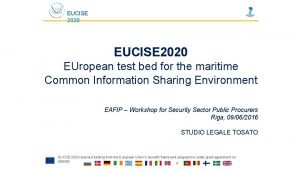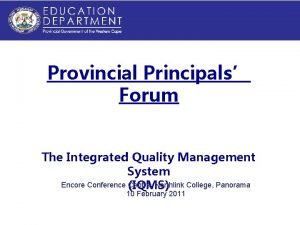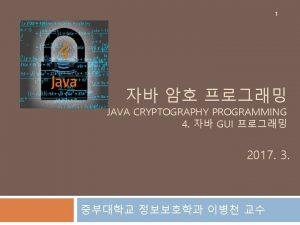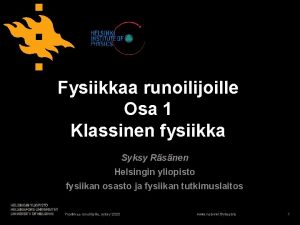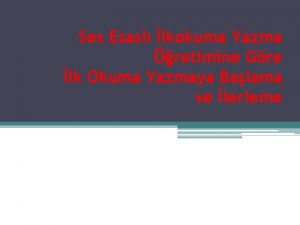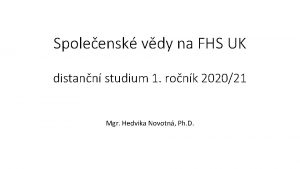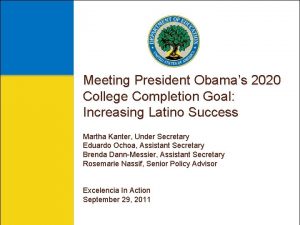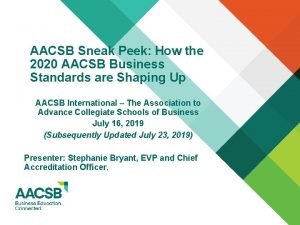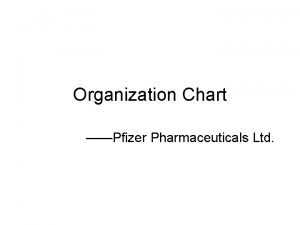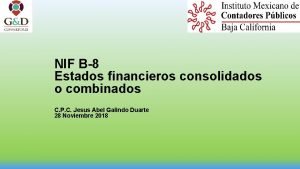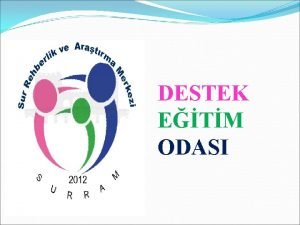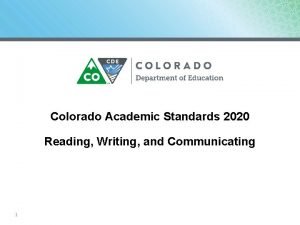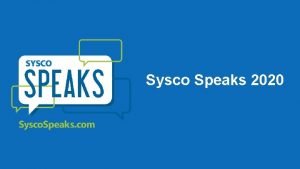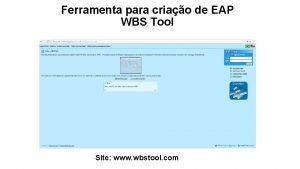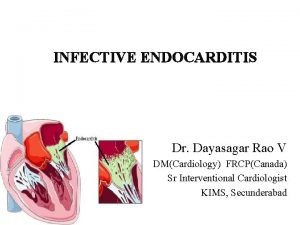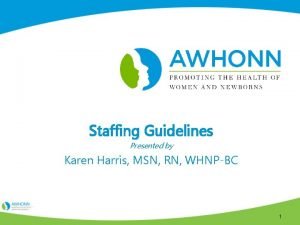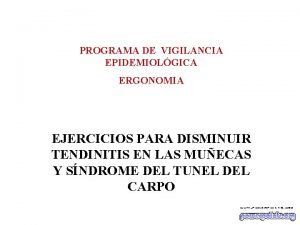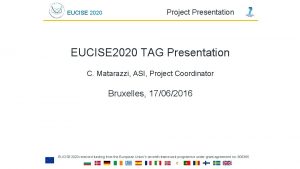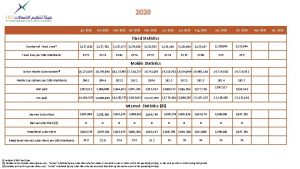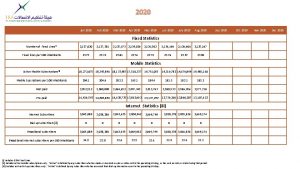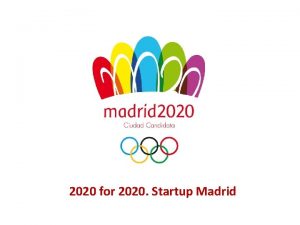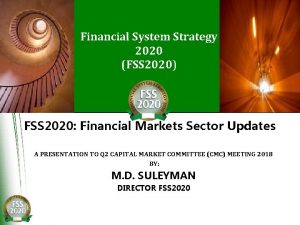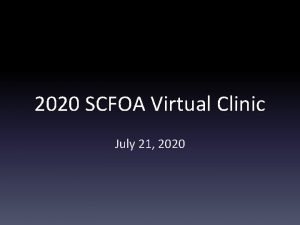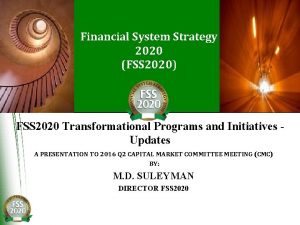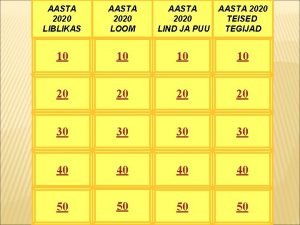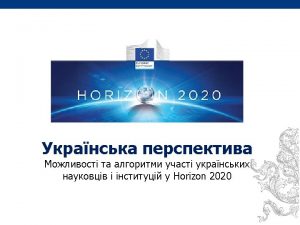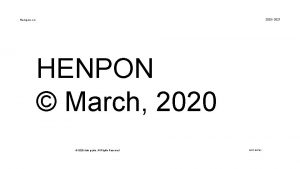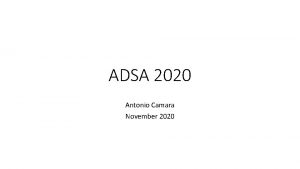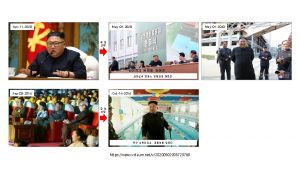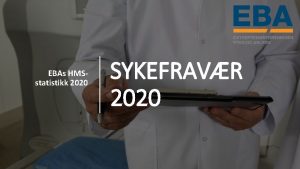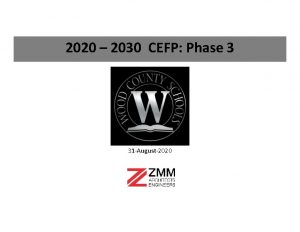EUCISE 2020 D 3 1 7 EUCISE 2020
























- Slides: 24

EUCISE 2020 D 3. 1. 7 EUCISE 2020 Governance Model for CISE Technical Advisory Group 18 - 19 Nov 2015 | Brussels, Belgium Mr. Alkis Astyakopoulos (alastiak@iit. demokritos. gr) Mr. Charalampos Mavrikas (cmavrikas@iit. demokritos. gr) Dr. Sotirios Kanellopoulos (skanellopoulos@iit. demokritos. gr) Dr. Stelios C. A. Thomopoulos (scat@iit. demokritos. gr ) Integrated Systems Laboratory, Institute of Informatics and Telecommunications National Center for Scientific Research "Demokritos" EUCISE 2020 has received funding from the European Union’s seventh framework programme under grant agreement no: 608385

• Introduction • Governance Principles • Approach to define the governance model • References • Methodological Framework • Overview • Domains of Governance • Interoperability Levels • CISE Governance process Table • What is a CISE Governance Process? • Roadmap for the definition of governance • Overview and what we have achieved • CISE Governance Process matrix • CISE Governance Processes definition • Top-down study • Next Steps • Extra slides: Working Groups, Legal interoperability layer, Technical interoperability layer, Semantic interoperability layer, Organizational interoperability EUCISE 2020, 18 -19 November 2015 | Brussels, Belgium SUMMARY Summary

• Introduction • Governance Principles • Approach to define the governance model • References • Methodological Framework • Overview • Domains of Governance • Interoperability Levels • CISE Governance process Table • What is a CISE Governance Process? • Roadmap for the definition of governance • Overview and what we have achieved • CISE Governance Process matrix • CISE Governance Processes definition • Top-down study • Next Steps • Extra slides: Working Groups, Legal interoperability layer, Technical interoperability layer, Semantic interoperability layer, Organizational interoperability EUCISE 2020, 18 -19 November 2015 | Brussels, Belgium SUMMARY Summary

The governance structure to be successful it needs to q Be “realistic” and “dynamic”. q “Realistic” accommodate all the complex administration/governance requirements (what needs to be governed q “Dynamic” (i) accommodate new requirements that will emerge in the future and are not feasible to foresee in advance (ii) embrace the different views from all participating competent authorities. q Respect the principles of subsidiarity/ decentralization q Fit the environment of a “Federation of Systems” with voluntary participation q support both day-to-day function, decision making and mid and short-term planning. EUCISE 2020, 18 -19 November 2015 | Brussels, Belgium GOVERNANCE PRINCIPLES Governance Principles

APPROACH Approach (as presented by D 3. 1. 7) Outcome 1: A Methodological Framework regarding the development of a governance model for CISE. Outcome 2: A Roadmap, namely a sequence of steps that we need to follow to deliver the model. Outcome 1: Methodological Framework Outcome 3: A First instantiation of the Governance Model. EUCISE 2020, 18 -19 November 2015 | Brussels, Belgium Outcome 2: Roadmap Outcome 3: First instantiation of the Governance model

1. COM(2010) 584, “on a Draft Roadmap towards establishing the Common Information Sharing Environment for the surveillance of the EU maritime domain” 2. Governance Recommendations Draft Report by DIGIT 3. European Interoperability Framework (EIF) for European public services by Interoperability Solutions for Public Administrations (ISA) 4. CISE Network Topology v. 1 building blocks and requirements 5. CISE Architecture Visions Document by TAG v 3. 0 (and previous versions) 6. EUCISE 2020 Do. W 7. CISE Incubator Report v 1. 2 EUCISE 2020, 18 -19 November 2015 | Brussels, Belgium REFERENCES References

• Introduction • Governance Principles • Approach to define the governance model • References • Methodological Framework • Overview • Domains of Governance • Interoperability Levels • CISE Governance process Table • What is a CISE Governance Process? • Roadmap for the definition of governance • Overview and what we have achieved • CISE Governance Process matrix • CISE Governance Processes definition • Top-down study • Next Steps • Extra slides: Working Groups, Legal interoperability layer, Technical interoperability layer, Semantic interoperability layer, Organizational interoperability EUCISE 2020, 18 -19 November 2015 | Brussels, Belgium SUMMARY Summary

Dimension 1: The domains of governance (what needs to be governed). • CISE vision • CISE operation • Membership management • Procurement management • Communication management Dimension 2: The 5 levels interoperability as defined by EIF • Political context • Legal interoperability • Organizational interoperability • Semantic interoperability • Technical interoperability • ? EUCISE 2020, 18 -19 November 2015 | Brussels, Belgium of METHODOLOGICAL FRAMEWORK (OVERVIEW) Methodological Framework (Overview)

1. CISE vision and planning: Plans and visualizes the policies, the high level objectives and the high level system capabilities that will meet these objectives. 2. CISE operation: Executes all necessary day-to-day activities to ensure seamless function of CISE at all participation levels. 1. “Operation, Configuration, verification & Maintenance of CISE components” 2. “Management of Security Policies” 3. “Manage changes and configure CISE information model” 4. “Management of Service Level Agreements” 3. Membership management: Membership management could have been part of CISE operation but it is kept as a separate domain because of its importance. 1. “Audit Interface Readiness level”, 2. “Semantic Interoperability level”, 3. “ management of legal baseline regarding CISE membership” (code of conduct) EUCISE 2020, 18 -19 November 2015 | Brussels, Belgium DOMAINS OF GOVERNANCE Domains of Governance

4. Procurement management: Carries-out all necessary activities related to the procurement life-cycle: prepare, develop, publish a tender and then evaluate and award contracts to the successful bidder. 1. Procurement Technical specifications and evaluation criteria 2. Procurement technical verification and validation 3. Legal issues: procurement scheme (eligibility with EU national laws), IPRs, 4. Integrated Procurement management 5. Communication management: Plans, facilitates and executes all activities related to communications. The audience addressed are competent maritime authorities participating in CISE, CISE stakeholders and the public opinion. 4. CISE components s/w release of versions and documentation 5. CISE communication management tools (including twitter, Facebook, Linked. In, forum, Instagram etc. ) 6. Communicate Semantic Interoperability processes outcomes EUCISE 2020, 18 -19 November 2015 | Brussels, Belgium DOMAINS OF GOVERNANCE Domains of Governance

Dimension 1: The domains of governance (what needs to be governed). • CISE vision • CISE operation • Membership management • Procurement management • Communication management Dimension 2: The 5 levels interoperability as defined by EIF • Political context • Legal interoperability • Organizational interoperability • Semantic interoperability • Technical interoperability • ? EUCISE 2020, 18 -19 November 2015 | Brussels, Belgium of METHODOLOGICAL FRAMEWORK (OVERVIEW) Methodological Framework (Overview)

EUCISE 2020, 18 -19 November 2015 | Brussels, Belgium INTEROPERABILITY LEVELS Interoperability levels

Governance Domains This approach leads us to a Table as the one illustrated below: EUCISE 2020, 18 -19 November 2015 | Brussels, Belgium Interoperability Levels METHODOLOGICAL FRAMEWORK (CISE GOVERNANCE PROCESS TABLE) Methodological Framework (CISE Governance process table)

At its most basic level, a process is simply a way of transforming an input into an output using proven tools and techniques. • Description of the process: includes the elementary actions that constitute a process plus the methods and the tools used to carry-out the actions. • Input/ output: Inputs might come internally from CISE governance processes (of the same or different group) or externally from the European Commission, relevant initiatives, national governance bodies or other. Input Outputs can be services, documents or other results. EUCISE 2020, 18 -19 November 2015 | Brussels, Belgium METHODOLOGICAL FRAMEWORK (WHAT IS CISE GOVERNANCE PROCESS? ) Methodological Framework (What is CISE Governance process? )

q. It is sustainable q. Can add, remove Governance domains. Interoperability layers are most unlikely to change q Each process is managed individually (by an experts group) so the governance definition is manageable. A facilitator should have ownership and good understanding of the masterplan to coordinate the different expert groups q. It is modular, so that changes in one process do not affect significantly other processes. q. Can embrace future endeavors, best practices and lessons learnt acquired during EUCISE 2020 q. As noted during the EUCISE 2020 meeting in Rome (July 2015): q“there might be other methods as well (to define a governance model), and this method in question is definitely a one of appropriate ones” q“not so frequent to attempt to define governance in the bottom-up approach” EUCISE 2020, 18 -19 November 2015 | Brussels, Belgium METHODOLOGICAL FRAMEWORK (BENEFITS) Methodological Framework (benefits)

• Introduction • Governance Principles • Approach to define the governance model • References • Methodological Framework • Overview • Domains of Governance • Interoperability Levels • CISE Governance process Table • What is a CISE Governance Process? • Roadmap for the definition of governance • Overview and what we have achieved • CISE Governance Process matrix • CISE Governance Processes definition • Top-down study • Next Steps • Extra slides: Working Groups, Legal interoperability layer, Technical interoperability layer, Semantic interoperability layer, Organizational interoperability EUCISE 2020, 18 -19 November 2015 | Brussels, Belgium SUMMARY Summary

15. 07. 2015 We were here in Rome meeting 30. 10. 2015 A full set of processes is finalized 30. 10. 2015 Governance models survey 1. CISE Strategy 2. CISE Governance Methodological Framework 3. CISE Governance Processes definition 4. CISE Governance structure, roles and responsibilities 6. Possible Governance Models for CISE Bottom-up approach 5. Survey of the existing Governance Models of International & European maritime structures Top-down approach EUCISE 2020, 18 -19 November 2015 | Brussels, Belgium ROADMAP (OVERVIEW OF WHAT HAS BEEN ACHIEVED) Roadmap (Overview of what has been achieved)

CISE Vision & planning CISE Operation Membership management Procurement management Communication management ) Political Context Legal Interoperability CISE strategy Legal Baseline 1: Legal Impact Assessment at EU level Legal Baseline 2: Legal Impact Assessment at National Level Security policies CISE Audit against legal baselines CISE Governance model CISE action plan CISE growth strategy along the seven CISE communities CISE portfolio definition and management CISE dissemination plan (public) CISE communication plan (restricted to EC and CISE community) Organizational Interoperability Semantic Interoperability Information exchange and joint operations requirements Memorandums of Understanding Management of Service Level Agreements CISE operational reporting Management of legal baseline regarding CISE membership: rights and responsibilities Legal Advice on the procurement process including Intellectual Property Rights Procurement Integrated Management Audit of Trustworthiness as data producer and consumer Manage changes and configure CISE information model Technical Interoperability CISE Architecture and system design specification Operation, Configuration, verification & Maintenance of CISE components Management of Security Policies Compatibility verification and Acceptance of new legacy systems and their adaptors (Audit Interfacing Readiness Level) Assessment of the CISE participants Semantic Interoperability Level (SIL) Plan and execute the upgrade of CISE participants Semantic Interoperability Level (SIL) Communicate Semantic Interoperability processes outcomes Financial management Funding and subsidies management Cost Benefit Analysis from the Use of CISE EUCISE 2020, 18 -19 November 2015 | Brussels, Belgium Procurement Technical specifications and evaluation criteria Procurement technical verification and validation CISE components s/w release of versions and documentation CISE communication management tools (including twitter, Facebook, Linked. In, forum, Instagram etc. ) ROADMAP (CISE GOVERNANCE PROCESS MATRIX) Roadmap (CISE Governance Process Matrix)

Legal Working Group Finish Boarder Guard (FBK) Swedish Coast Guard (SCG) Marine Technology Center (MTC) Hellenic Ministry of Defense (HMOD) Date 29. 07. 2015 20. 08. 2015 17. 09. 2015 ) Technical Working Group Italian Navy (IN) Direção-Geral de Política do Mar (DGPM) Romanian Border Police (IGPF) Joint Research Center (JRC) – advisor/reviewer Teleconference 1 st teleconference conducted with the Legal Group for reviewing the document and proposing new governance processes under the legal interoperability layer 2 nd teleconference conducted with the Legal Group for further reviewing the document and finalizing the governance processes under the legal interoperability layer and assigning the description of processes 1 st teleconference conducted with the Technical Group for reviewing the document and finalizing the governance processes under the technical interoperability layer and assigning the description of processes Teleconference organized to discuss the revised Governance processes matrix prepared by DGPM and decide which of them should be kept and which ones should be merged with the existing processes EUCISE 2020, 18 -19 November 2015 | Brussels, Belgium ROADMAP (WORKING GROUPS & TELECONFERENCES) Roadmap (Working Groups & Teleconferences)

PARTNERS Tasks: ) • Why we need this Governance processes • In what way does it serve governance and practical needs that we can foresee or met during the implementation of the project? • Does it link to the outcomes of any other governance process? Under the same or different interoperability layer? • What this process will do • Which are the methods and the tools that this process will use. Can be based on international best practices e. g. Integration Readiness Level as defined by NASA or similar or from effective practices employed during the first phase of the project (legal impact assessment) • What are the outputs. EUCISE 2020, 18 -19 November 2015 | Brussels, Belgium ROADMAP (CISE GOVERNANCE PROCESS DEFINITION) Roadmap (CISE Governance Process Definition)

EUCISE 2020, 18 -19 November 2015 | Brussels, Belgium TOP DOWN APPROACH Top Down Approach

q. Finalize the descriptions for the processes. q At the moment, description focus on the “why we need this process” plus a general description of the activities it carries-out. We need to exemplify: q the exact tools and methods to be used taking into consideration best practices and lessons learnt from Phase 1 and Phase 2: e. g the legal impact assessment, collection of requirements process, semantic interoperability etc q The inputs/ outputs of the processes and how they are relevant to other processes (in turn as new input and output) q. All this will lead to a complex pertt diagram q. Based on the outcome, and the survey of governance models, visualize a Governance Structure (of roles and groups) qdeliver a Responsibility Assessment Matrix (RAM) of roles & groups vs processes EUCISE 2020, 18 -19 November 2015 | Brussels, Belgium NEXT STEPS Next Steps

• Introduction • Governance Principles • Approach to define the governance model • References • Methodological Framework • Overview • Domains of Governance • Interoperability Levels • CISE Governance process Table • What is a CISE Governance Process? • Roadmap for the definition of governance • Overview and what we have achieved • CISE Governance Process matrix • CISE Governance Processes definition • Top-down study • Next Steps • Extra slides: Working Groups, Legal interoperability layer, Technical interoperability layer, Semantic interoperability layer, Organizational interoperability EUCISE 2020, 18 -19 November 2015 | Brussels, Belgium SUMMARY Summary

EUCISE 2020 THANK YOU! Technical Advisory Group 18 - 19 Nov 2015 | Brussels, Belgium Mr. Alkis Astyakopoulos (alastiak@iit. demokritos. gr) Mr. Charalampos Mavrikas (cmavrikas@iit. demokritos. gr) Dr. Sotirios Kanellopoulos (skanellopoulos@iit. demokritos. gr) Dr. Stelios C. A. Thomopoulos (scat@iit. demokritos. gr ) Integrated Systems Laboratory, Institute of Informatics and Telecommunications National Center for Scientific Research "Demokritos" EUCISE 2020 has received funding from the European Union’s seventh framework programme under grant agreement no: 608385
 Eucise
Eucise Eucise
Eucise Iqms composite score sheet 2018
Iqms composite score sheet 2018 Eclipse rcp
Eclipse rcp Fysiikka syksy 2020
Fysiikka syksy 2020 Ses grupları
Ses grupları Fhs harmonogram 2020/21
Fhs harmonogram 2020/21 Escuela de predicadores
Escuela de predicadores 2020 revised curriculum and assessment plans grade 6
2020 revised curriculum and assessment plans grade 6 Us 2020 college completion goal
Us 2020 college completion goal Aacsb table 3-1
Aacsb table 3-1 Pakistan hindu population 2020
Pakistan hindu population 2020 Pfizer organizational structure
Pfizer organizational structure Perikopenordnung 2020
Perikopenordnung 2020 Géraldine chaplin 2020
Géraldine chaplin 2020 Nif b8 estados financieros consolidados
Nif b8 estados financieros consolidados Destek eğitim odası açma
Destek eğitim odası açma Katie dallam
Katie dallam Colorado academic standards 2020
Colorado academic standards 2020 Sysco speaks.com
Sysco speaks.com Wbstool saiu do ar
Wbstool saiu do ar Dr dayasagar cardiologist kims
Dr dayasagar cardiologist kims Awhonn mfti
Awhonn mfti Vision 2020 iglesia de dios de la profecia
Vision 2020 iglesia de dios de la profecia Incoterms 2020 ejercicios resueltos
Incoterms 2020 ejercicios resueltos

